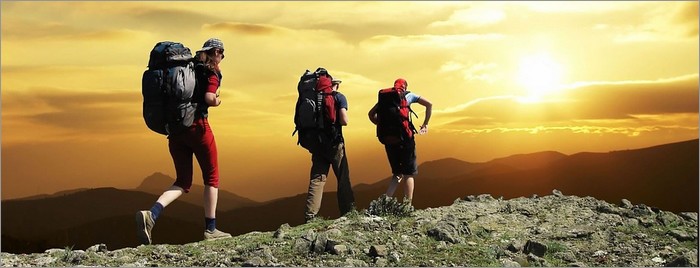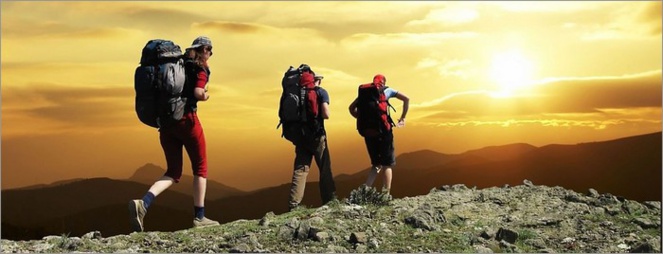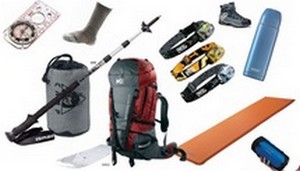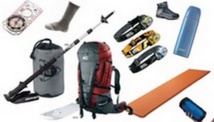There are probably as many good tips as hikers. This article below is not meant to be an absolute guide in terms of preparation and equipment for hiking, but a little help built on our own experience. We included some links to specialized articles for those who want to explore the topic in greater depth.
PHYSICAL PREPARATION FOR YOUR HIKE IN CORSICA
Corsican mountains have their specific features. "A mountain in the sea, no doubt, but a real mountain", wrote Michael Fabrikant in 1970, examining the possibility of creating a high mountain hiking trail, which finally became the legendary GR20 in 1972.
Although the height is moderate (the highest point is 2706m), the Corsican mountains often have the characteristics of high mountains (except glaciers): rocky and steep terrain, steep climbs, unstable climate, etc. It is very important that you have a physical preparation that matches the level of the hike you're going to engage in, to get the most out of your trek in Corsica.
Hiking equipment
Choosing a good hiking gear is important to ensure your safety and comfort. The main criteria to take into account are:
- Comfort
- Resistance
- Weight
- Price
1) HIKING/TREKKING SHOES
- Type of shoes
For high mountain tours (like GR20 for example), choose so-called "trekking" or "hiking" shoes, with intermediate stiffness (semi-rigid sole) for a maximum weight of 1500g per pair.
For less difficult tours (less rugged terrain and lighter bag), so-called "hiking" or "walking" shoes (less heavy and with a flexible sole) are enough.
- Some tips
→ How to choose your hiking shoes
2) THE RUCKSACK
- The rucksack
- For overnight stays in shelters or sheepfolds, a bag of about 50 liters is necessary (because you have to carry a sleeping bag and some change of clothes). In addition to the weight (extremely variable) that must be taken into account, you have to pay a special attention to comfort: padded and adjustable shoulder straps, wide lap straps and chest strap. Try to avoid large side pockets, they often create excess weight and imbalance according to their filing.
- For stays without porterage, a small rucksack of 30 or 35 liters is enough.
- The adjustment
- The filing
- Some tips
- a bivvy bag to protect your bag
- bin bags for your clothes
- a freezer bag for your papers and money
If you travel with your friends or family, try to divide some things up, like toothpaste, soap, medicines...
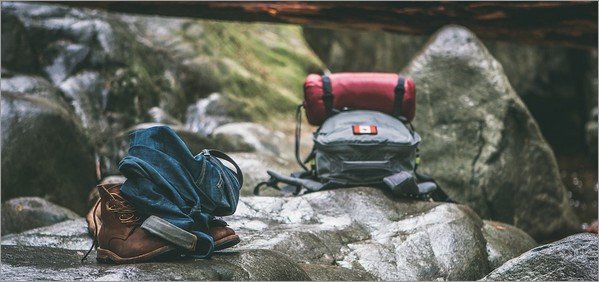
3) THE RAIN JACKET
The weather conditions in the Corsican mountains can be changing, and many hikers are often surprised by the bad weather even though their day began under a radiant sun...
A waterproof jacket is as essential as a pair of shoes or a backpack.
Take a breathable Gore-Tex jacket, that protects against rain while evacuating (more or less) moisture from your body.
Avoid both types of rainwear:
- Poncho: totally unsuitable for rough terrain (it can prevent you from seeing where you put your feet) and windy conditions (it will fly from all sides, Marylin Monroe style!)
- K-way type jackets: waterproof but totally preventing the evacuation of perspiration (you will end up getting more wet inside than outside!).
A waterproof jacket is as essential as a pair of shoes or a backpack.
Take a breathable Gore-Tex jacket, that protects against rain while evacuating (more or less) moisture from your body.
Avoid both types of rainwear:
- Poncho: totally unsuitable for rough terrain (it can prevent you from seeing where you put your feet) and windy conditions (it will fly from all sides, Marylin Monroe style!)
- K-way type jackets: waterproof but totally preventing the evacuation of perspiration (you will end up getting more wet inside than outside!).
4) SOME USEFUL TIPS
- Underwear
- To improve your comfort
- Bowl, cup and small plastic cutlery are utensils that allow to better appreciate your outdoor picnics. Choose light ones.
- Well used hiking sticks can distribute up to 40% of the effort on the upper body. Here again, pay attention to the weight!
- Do not hesitate to test your equipment before your departure: it will ensure peace of mind during your stay!
- First-aid kit
- Sunscreen, lipstick
- Analgesic and anti-inflammatory balm
- Simple and double skin dressings in case of blisters
- Elastoplast band (imperative) in case of slight sprain or for muscle reinforcement
- An antiseptic
- Sewing kit and small instruments (safety pin, nail clippers)
- Your personal medications
- Most frequent small injuries
- Small sprains
- Lack of sleep due to less comfortable sleeping arrangements compared to each person's daily life
- Scratches and small abrasions

 Departures 2025
Departures 2025
